Checking and comparing with blue prints
Joe, thanks for your first reply.
Yes it's right, this was the first impression with this model - it's a very bad runner! However I searched for pictures and a great source are the archives of N&W Historical Society, where I found a lot of documents about this class CG caboose (and also a lot of differences at this model). I'm planning to use this model with a 1930 train so I will install the more correct Bettendorf trucks of that time with leaf springs and so all running problems should be eliminated. Two different truck types are ordered, Tichy Bettendorf trucks with leaf springs and Kadee self-centering caboose trucks. All pictures shows that these cabooses were equipped with these trucks. Maybe that the cabooses received these swing-motion trucks in later years, however I do not need them. With this the first problem is solved however this was one of simplest one!
A few more checking showed on underside an AB-brake however with a lot of not fixed connections at brake gear, a fat hole for a missing part and some more incomplete details.
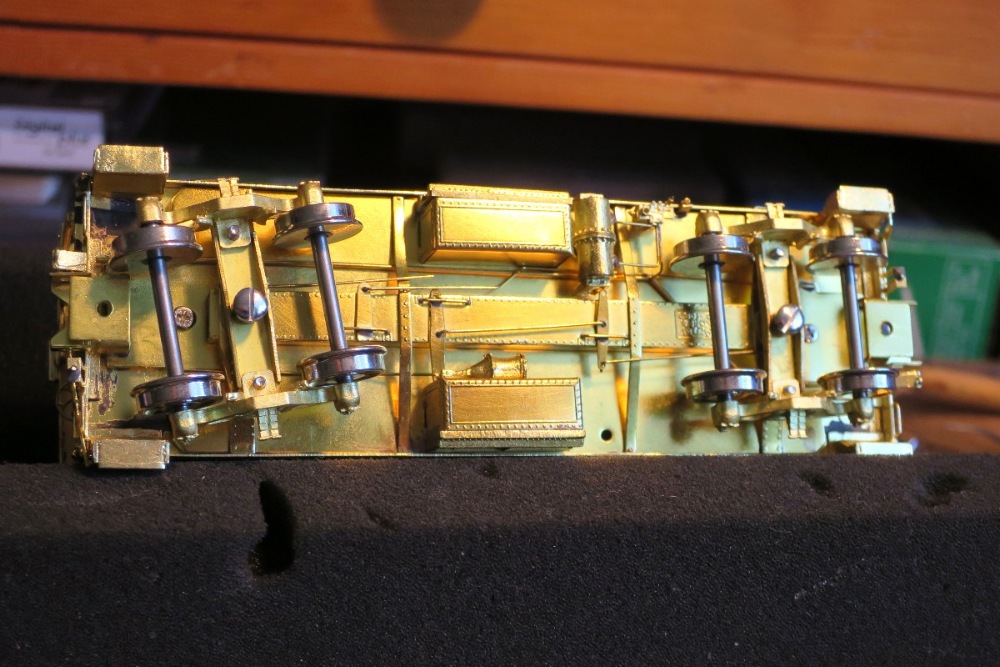
Here the most noticeable mistakes.
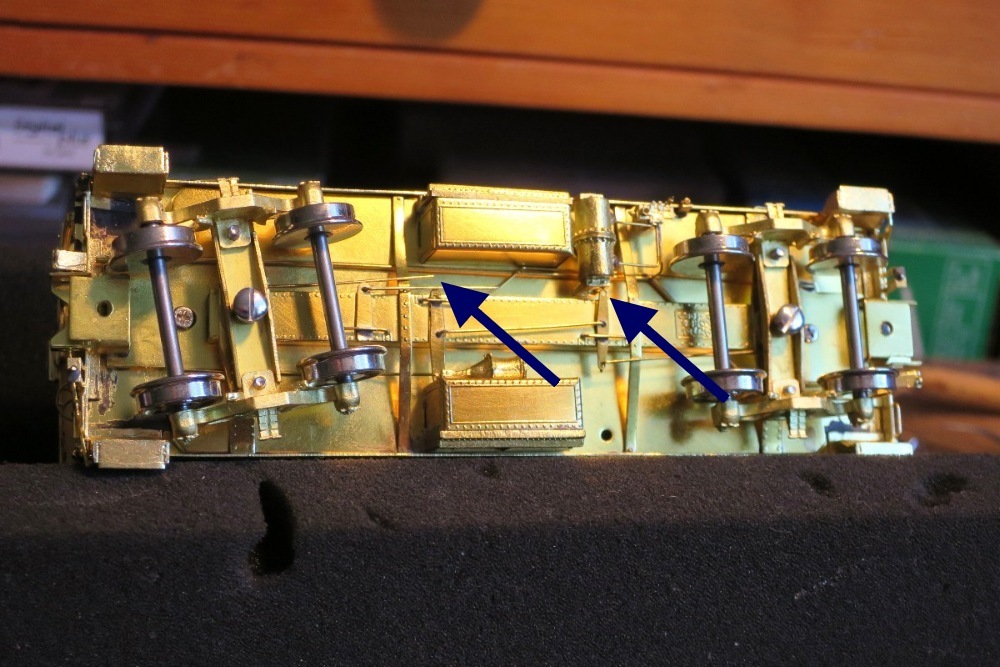
A free hanging rod and open holes at levers of brake gear.
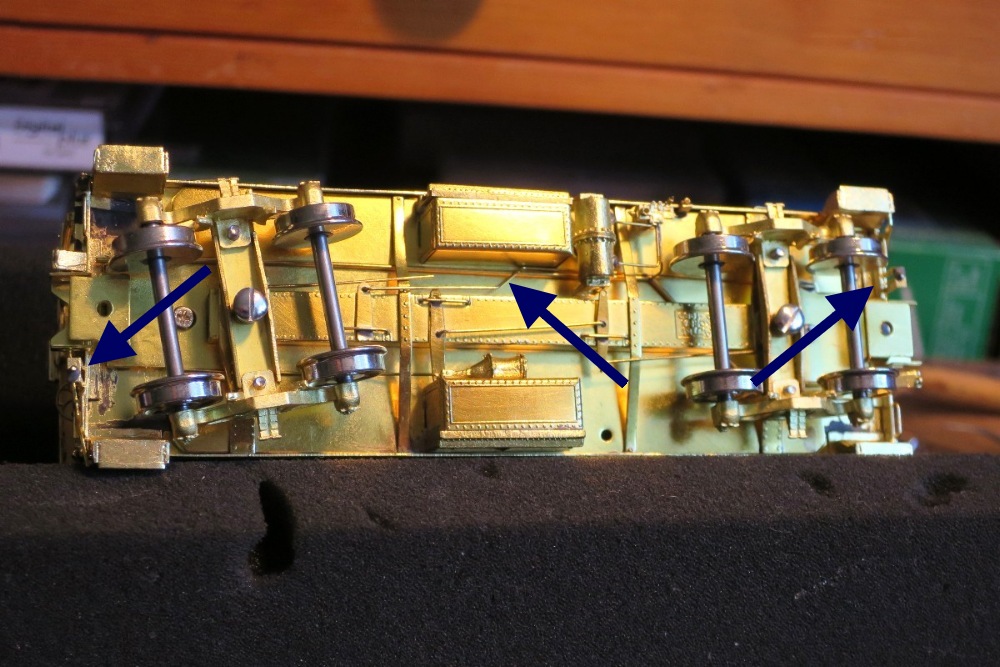
A pull rod to hand brake with sharp bends (!) and missing connections to the both hand brake shafts at platforms.
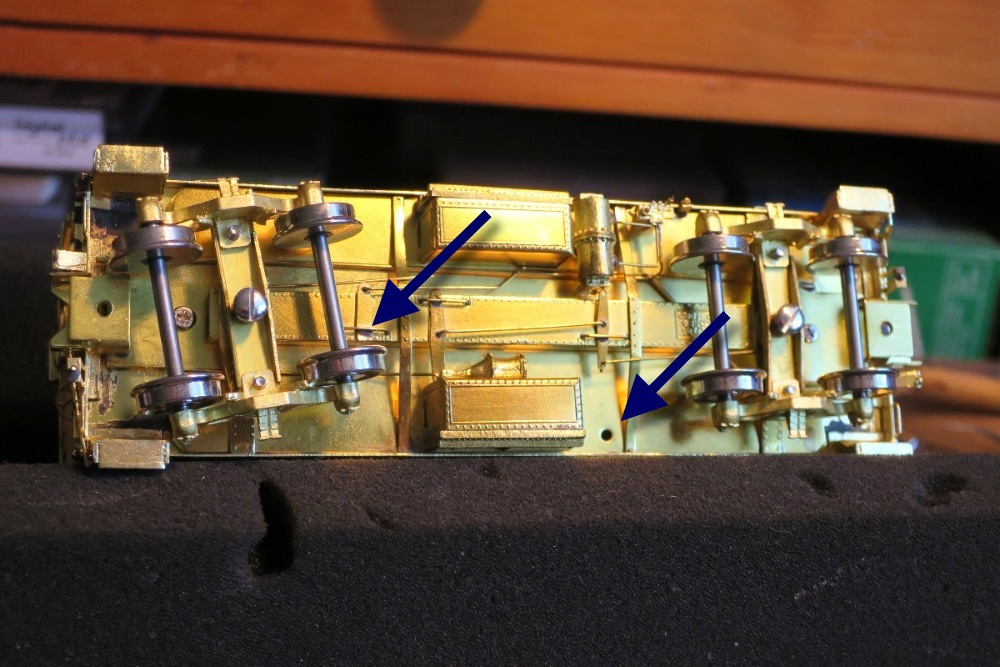
The most noticeable mistake is visible at left lever which has been cut off by a plier in order to give the truck enough play! However which relative short car needs such a spin for the trucks?
The hole is prepared for fixing a sink which I found in a parts bag, however a fitting screw was not inserted. Also I had to search a well fitting screw and I think that I have a lot of different screws. I don't understand because the sink was not fixed to model?
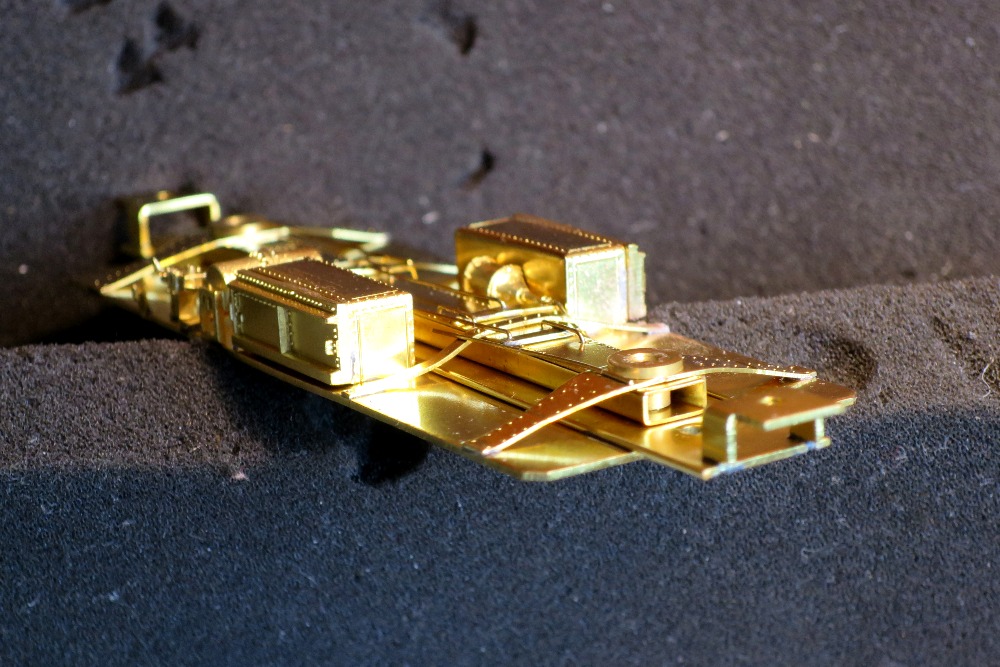
The more closer you look at the model, the more defects you will discover! See bolsters and cross beams here - nothing more than the cover sheets!
However this is not all! The real troubles became visible as I checked and compared this model with the drawings of archives of NWHS - here a link to a related search.
Unfortunately I can't show these drawings here in this post because of restricted permission rights. However you can see these related blue prints on a gallery of my website. I was very interested to study these documents in a high resolution version and so I ordered them for private use on my website by paying a small fee to NWHS. The result was very surprisingly!
I found on documents of this class CG caboose underbody arrangements with a K-brake and also with an AB-brake, however with a very different arrangement! Exactly this underbody arrangement which was built to the model was to find on two different caboose classes, the CH class and the C2 class. Used the producer here an underbody of other caboose models which he produced also? Unfortunately I can't give an answer on this question, however I know that this underbody is wrong! Maybe that the N&W modified brakes in later years how brakes must be changed from K-Brakes into AB-brakes after restrictions of AAR for K-brakes? However definitively ist this model with this brake is not that what I would like to use for my 1930 train! At this time the cabooses of CG class were equipped with the original in 1927 built K-brake!
There were only one conclusion together with all the mistakes of the underbody of my model - I must remove all the brake components and construct a complete new brake, a K-brake of course and maybe exactly built after the blue prints. And about this I will write in next post.